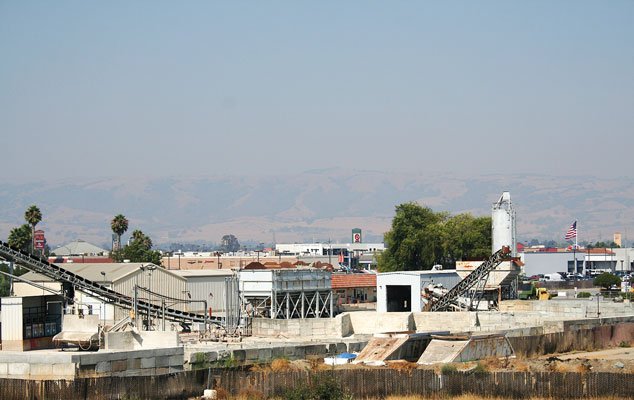Westerly winds moving into Gilroy will fill South Valley with
more smoke before ushering fresh air into the region later this
week.
Westerly winds moving into Gilroy will fill South Valley with more smoke before ushering fresh air into the region later this week.
Particulate floating in the air from the Lockheed wildfire burning in Bonny Doon turned the mountains surrounding Gilroy into ghostly apparitions, barely visible from Monterey Street Monday afternoon. According to the National Weather Service, patchy smoke and temperatures in the high-80s will stick around for a couple more days.
The mountain ranges bordering Gilroy act as a trap, capturing smoke and pollution, especially during the hot summer months when high pressure systems spiraling downward act as a lid, meteorologist Diana Henderson said.
“It’s why we get smog worse in the summer than the winter,” she said.
Skies will likely clear later this week when the wind shifts or when the fire is contained, Henderson said.
As of 12:50 p.m. Monday, firefighters had the Lockheed Fire 65 percent contained, according to Cal Fire’s Web site. The blaze began Wednesday evening and charred 7,017 acres since then, causing the forced evacuation of 2,400 Bonny Doon residents. The Gilroy Fire Department sent five men to help fight the blaze. All returned to the station safely about 1 p.m. Monday and are not scheduled to redeploy at this point, Battalion Chief Phil King reported.
Rather than posing a persistent health risk, the particulate lingering in the air will be more of an irritant to the eyes and throat, said Lisa Fasano, a spokeswoman for the Bay Area Air Quality Management District. Residents, especially those with asthma or other lung ailments, should avoid strenuous outdoor activity and stay indoors with windows and doors closed and air conditioners set to recirculate.
“It might not be wise to go for a jog or a bike ride this afternoon,” Fasano said. “Our noses and eyes are the best sources to determine whether the conditions are problematic.”
According to her agency’s Web site, the air quality forecast showed moderate air quality levels Tuesday – meaning that “unusually sensitive people should consider limiting prolonged outdoor exposure” – and better air quality levels toward the end of the week.














